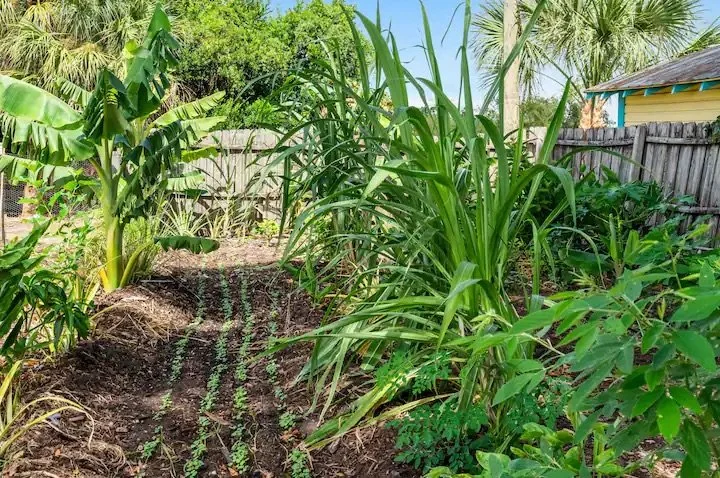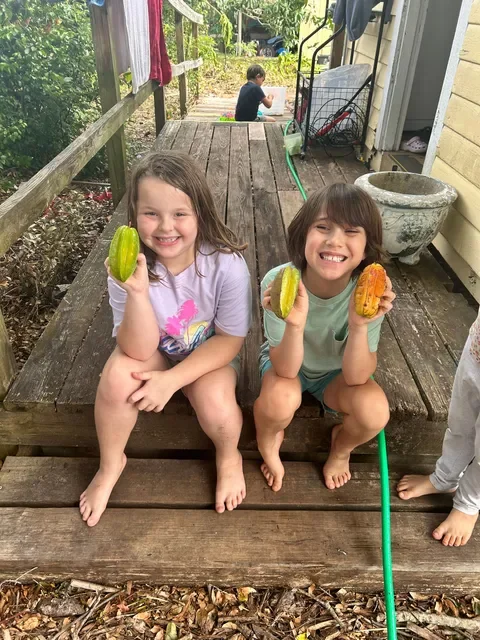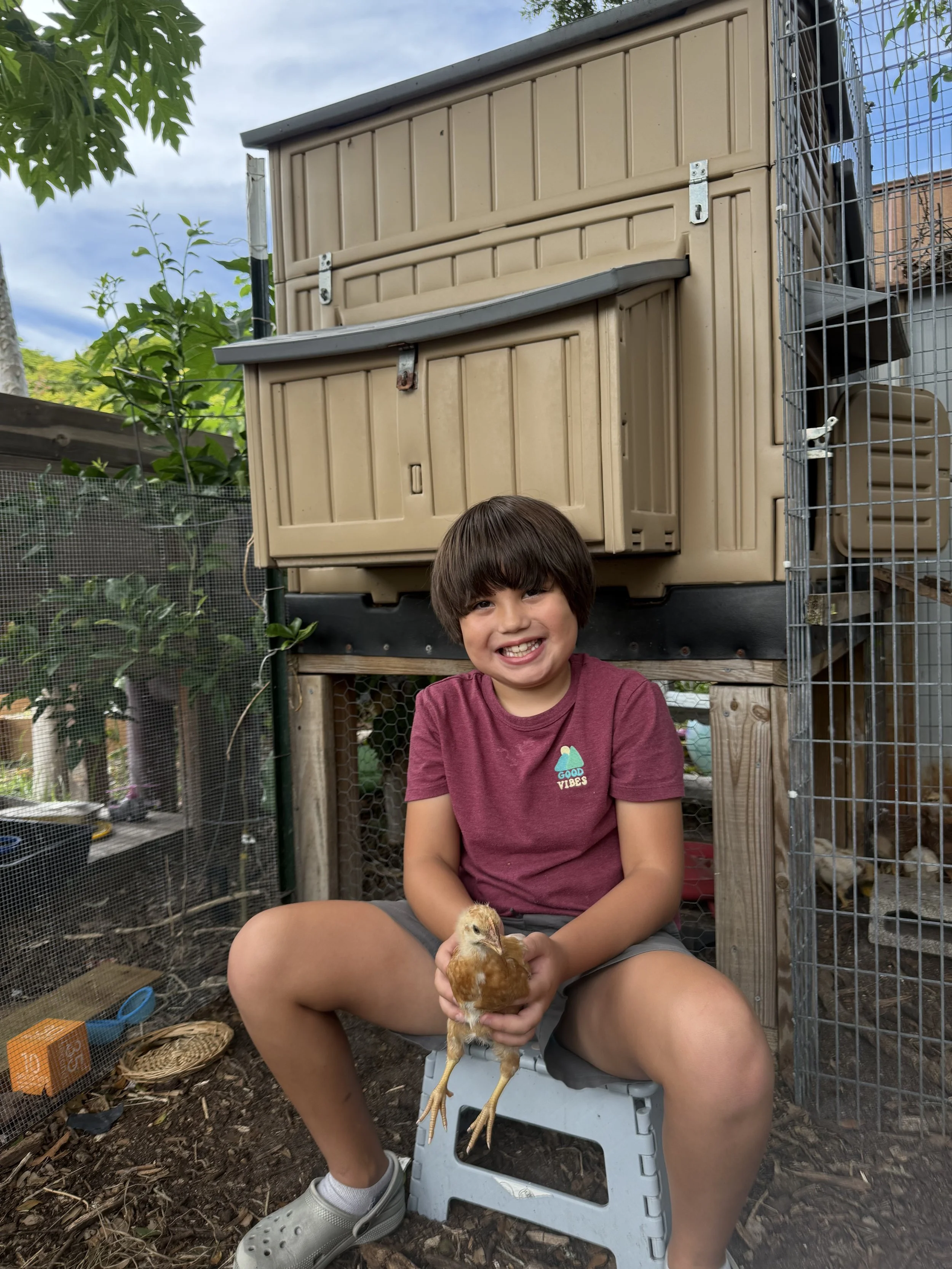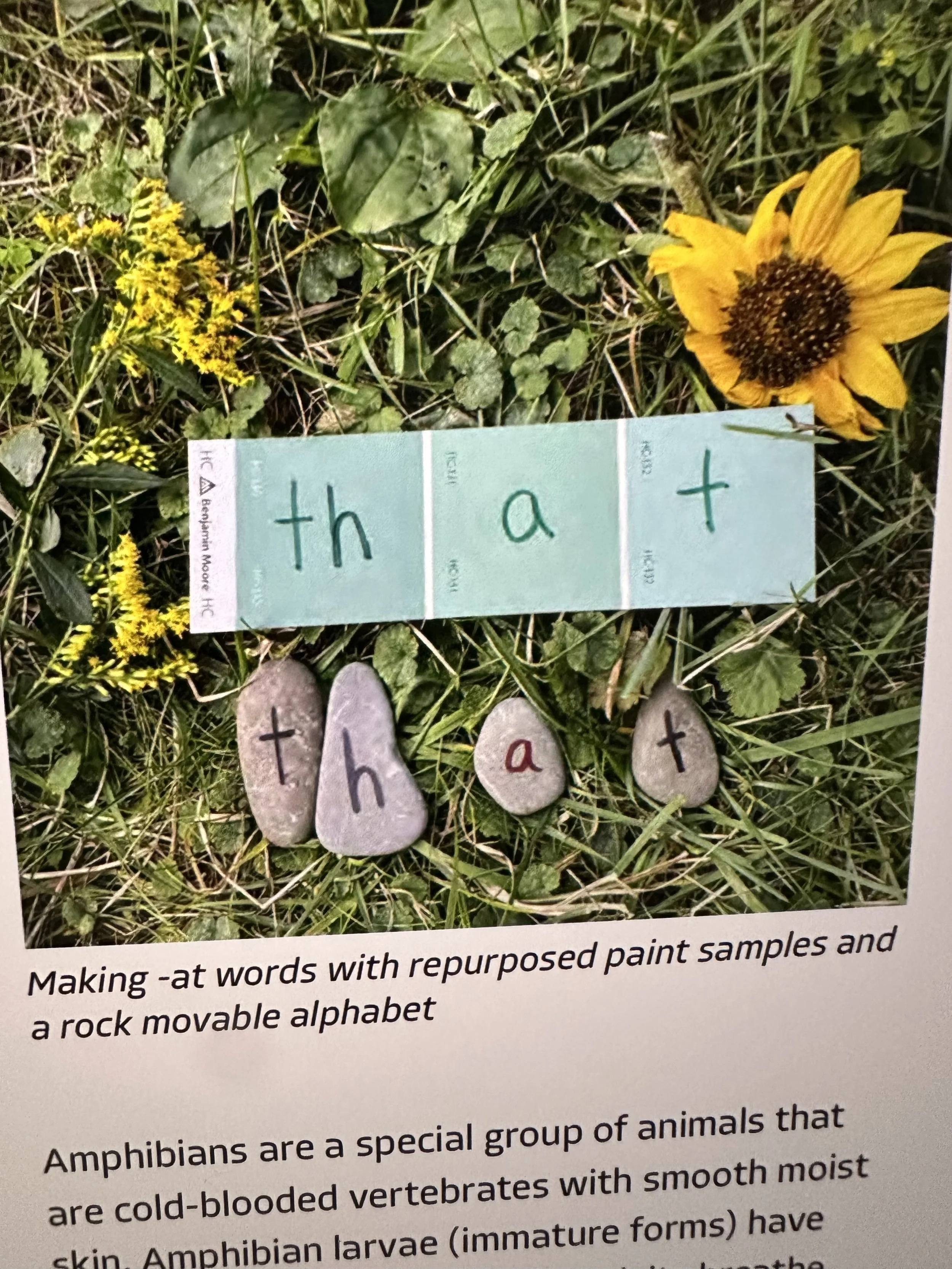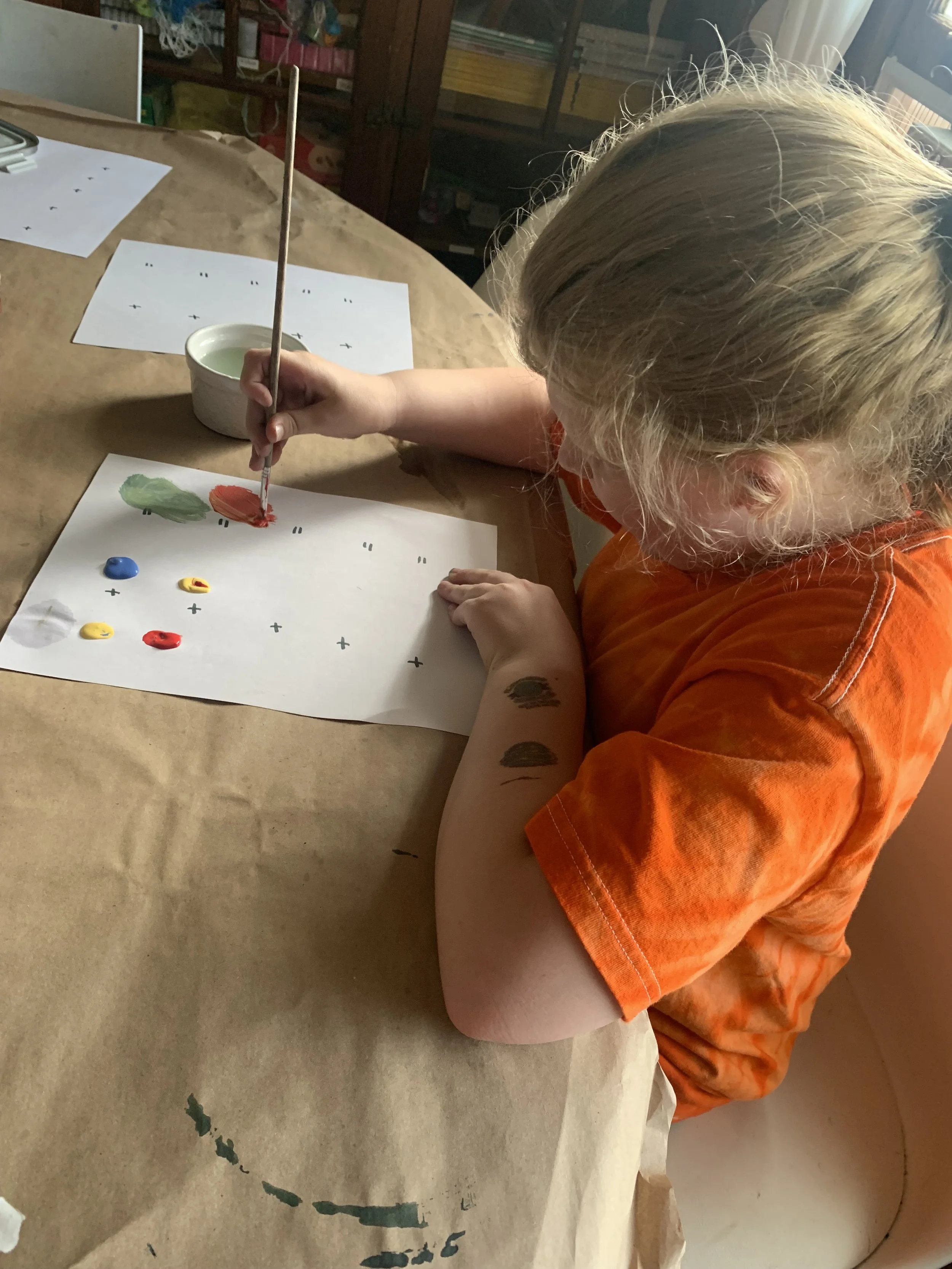Our Programs
Learning that honors every child
Who we serve
Current: Children ages 5–11 in a micro-school setting, with low student-to-teacher ratios. Each year, we thoughtfully expand by adding new grade levels and age groups, allowing children to continue growing with us in a supportive and consistent environment.
Future Expansion: Plans to welcome learners of all ages through inclusive, flexible programming.
How We Learn
At Ahava, learning is designed to support the whole child. Through small groups, nature-based exploration, and a focus on emotional regulation, we create an environment where children can thrive both academically and socially. Our curriculum uses the natural world as both classroom and tool, from solving math problems with objects in nature, to exploring literacy through the Ahava Theatre.
Learning on the Farm
By growing vegetables, children learn science and nutrition firsthand — then extend their learning by preparing and sharing the food they’ve helped cultivate.
Creative Expression
Art, music, and hands-on building projects using natural and recycled materials encourage imagination and problem-solving.
Exploration Outdoors
Daily time in nature supports science discovery, sensory regulation, and imaginative play.
Literacy in Action
In the Ahava Theatre, students bring a chosen story to life by elaborating on its characters, imagining new scenes, and performing together. Spelling and writing are supported through hands-on tools and movement-based activities — like moving letters, building words with tiles, or acting out vocabulary — that combine movement with academics. This approach engages both sides of the brain, holds children’s interest, and helps learning “stick” in meaningful ways.
Math in the Wild
Children explore math through movement and hands-on experiences — using objects in nature to sort, count, and problem-solve, or measuring and dividing while cooking and baking. They also practice real-world math by understanding money and selling their handmade products at the local farmers market. This active approach helps children connect abstract concepts to real experiences, engaging both mind and body so learning feels natural and lasting.
Program Options
At Ahava, families can choose the schedule that best fits their needs while ensuring children receive the same nature-based, whole-child learning experience in both options.
Program Schedule Hours and Tuition
Four-Day Program Monday–Thursday 8:45 a.m. – 3:00 p.m. $1,180 / month
Two-Day Program Monday/Wednesday or Tuesday/Thursday (based on availability) 8:45 a.m. – 3:00 p.m. $680 / month
For consistency and to provide more in-person learning days, Ahava is open year-round. Enrollment is a year-round commitment, and tuition is billed accordingly.
We proudly accept Step Up for Students Scholarships (UA and PEP) to help make our programs accessible to families.
